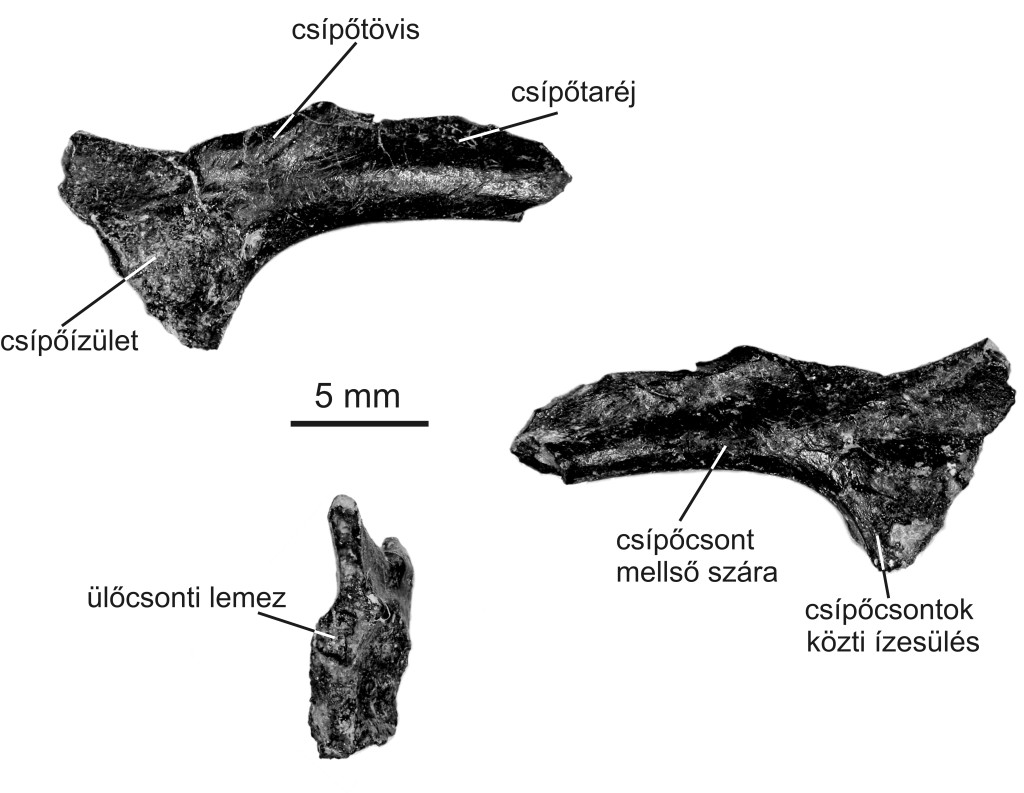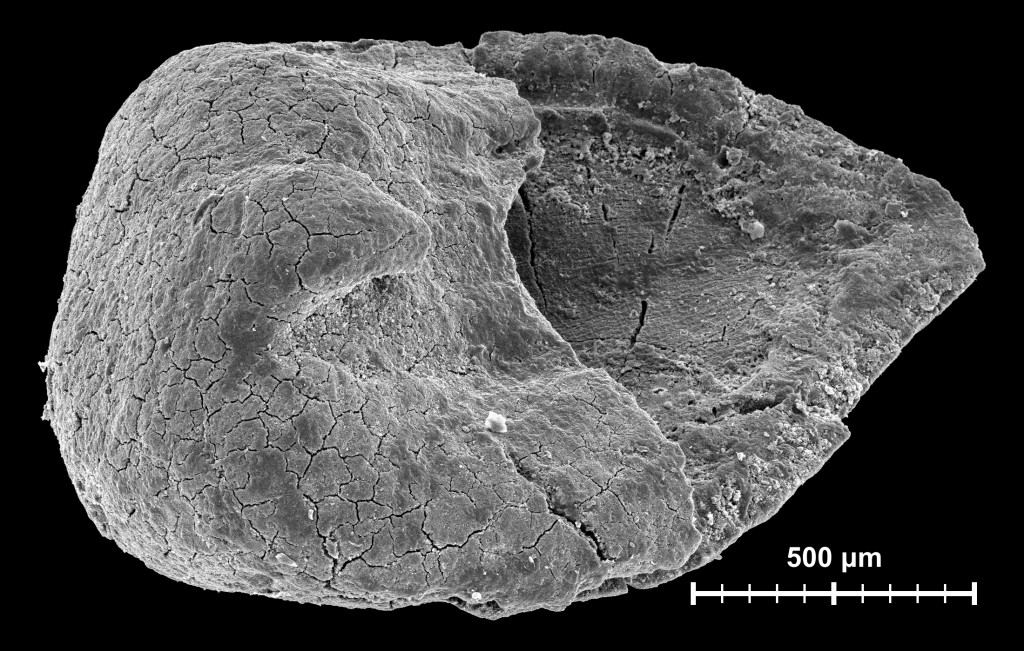
Mochlodon vorosi
Mochlodon, with a body length no longer than 2 meters, was one of the smallest within the clade of rhabodontid ornithopod dinosaurs endemic to Europe…

The lizard Distortodon rhomboideus was described by our research group as a new genus and species. It is known from the Iharkút locality based on just three partial (upper, as well as lower) jaws. It is closely related to Bicuspidon and they both belong to the subfamily Polyglyphanodontinae. Its most characteristic teeth bear two cusps just like Bicuspidon, however the outer and the inner cusps on these are displaced horizontally as compared to each other, giving the chewing surface of the teeth a „twisted” appeareance. The names of the genus and the species refer to this, Distortodon means distorted tooth in Latin while rhomboideus refers to the resulting shape of the crown.
The last tooth of the tooth row in the upper jaw is very small, even smaller than the one in Bicuspidon aff. hatzegiensis. The preceding large, single-cusped tooth, however, is not a simple cone as in Bicuspidon but bears a strong, belt-like parapet (cungulum) around the basal part of the crown.
Distortodon appears to have been quite similar in size and diet to the Iharkút Bicuspidon but might have been much less abundant in the area

Mochlodon, with a body length no longer than 2 meters, was one of the smallest within the clade of rhabodontid ornithopod dinosaurs endemic to Europe…

The rock layers of the Middle Triassic Templomhegy Dolomite Member on Somssich Hill (Villány) – which were deposited in a shallow marine environment…

This species belongs to the oldest frog group (Archaeobatrachia) and within that to the family of discoglossid frogs …

85 million years is a great time not only the fauna had time to undergo a complete change from the world of dinosaurs…